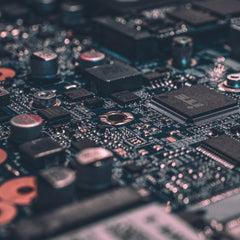This is part 5 of our 5 part series: 10 Internet of Things (IoT) Design Considerations
- Part 1: Cost and Network
- Part 2: Features and User Interface
- Part 3: Power and Size
- Part: 4: Antenna and Cloud
9. Interoperability
As more manufacturers enable their products for the IoT, consumers will be introduced to many different cloud applications due to lack of cooperation between difference devices and companies. This is where the emerging IoT standards can help. Device manufacturers who support these standards will be able to ensure their products will be able to work and communicate with other manufacturers’ products that support the same protocols. This makes operating many IoT-enabled devices together much more simple and convenient. This also opens up new business opportunities by allowing for new features that the original manufacturers never dreamed of. For example, interoperability means that one day it might be possible for a consumer to simply say, “good night, house” to their app, and the app will programmatically turn-off all of the main house lights, TV’s and appliances and turn on the outside lighting, set the alarm clock for the morning and set the coffee pot to start brewing when the sun rises. In this example, each device could be from a different manufacturer, but since they all support the same standard, the application knows how to talk to them all and create new service offerings.
Some of the emerging interoperability standards include: Thread (supported by the likes of Google/Nest, Samsung and more), HomeKit (supported by Apple), AllJoyn (supported by Microsoft and Sony, part of the AllSeen Alliance), IETF (an internet standards body) and ETSI (a European-based standards organization – primarily in Telecom). The standards landscape is changing rapidly and manufacturers need to adapt their products to work with these standards as they are consolidated and settled in the future.
10. Security
Building a secure IoT-enabled device comes at a cost. As the IoT continues to grow, there is an increasing focus on its security and how safe the claims of end-to-end solutions really are. While security threats in the news have scared away some manufacturers and consumers from entering the IoT space, others view it as an opportunity for added value to their products. Implementing high-cost security into every product a company has is ideal, however not very economical. Manufacturers must find proper security for each of their IoT solutions while keeping costs down for them and their end-user.
This process must start at the time of a product's conception. Proper due-diligence is required from each manufacturer to find a way to secure their devices, protect their consumer and ultimately, the rest of the IoT world as well.






